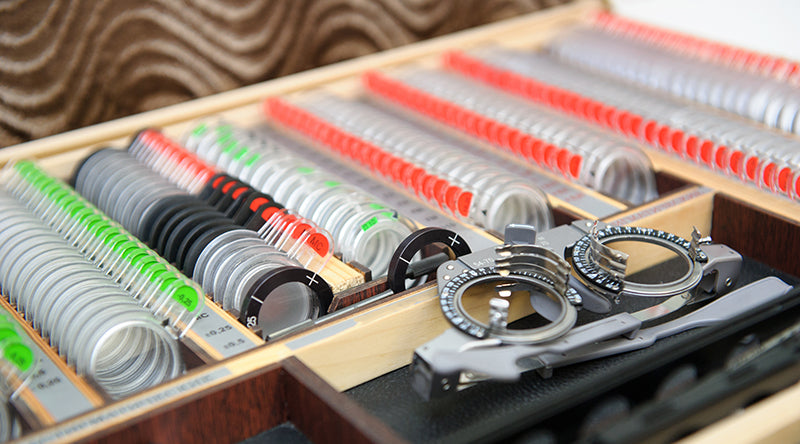Correcting Nearsightedness With The Right Lenses

Lots of people around the world face the challenges of myopia, otherwise known as nearsightedness, and a variety of factors can contribute to it, including age. Pound for pound, it’s the most common form of impaired vision, especially for those under 40 years of age.
Dealing with myopia can be a pain, sometimes literally so, especially for those who have to squint to read words and letters from a distance. The solution, naturally, is the use of corrective lenses which can provide crystal clear vision for those dealing with myopia. Choosing the right lenses is the first step towards gaining the upper hand.
HOW CORRECTIVE LENSES WORK
Lenses designed to combat myopia are concave in shape, and designed to reduce the focusing power of your eye. This is done by thinning the lens out in the center, and thickening it near the edges. In doing so, the lens shifts the focus of light so that it hits the surface of the retina, which counteracts the effects of myopia.
MEASURING MYOPIA FOR CORRECTIVE LENSES
Corrective lenses designed to deal with myopia are measured in diopters, which is a common value shown on eyeglass and contact lens prescriptions. You may have seen this number represented as the letter “D” on a prescription, and it typically begins with a minus sign. As this number increases, so too does the amount of indicated myopia that the lens will treat.
For instance, a lens measured at -8.00 D will correct twice as much myopia as a -4.00 D lens. Since both eyes rarely suffer from the same amount of myopia, it is usually required that both lenses have different values to compensate and balance out restored vision.
OPTIONS FOR CORRECTIVE LENSES
Bulky and thick lenses are sometimes an issue for people with more severe cases of myopia, but there are solutions. High-index lenses have become popular over the years, thanks to their slimmer and lighter design. They also treat other forms of vision impairment such as farsightedness and astigmatism.
Another option for eyeglass wearers is to choose anti-reflective coating, which does exactly as the name suggests. This reduces discomfort, and improves vision for the wearer by cutting down on harsh reflections. They also appear thinner to the naked eye, and therefore less obvious to everyone else.
CAN LENSES FIX ALL FORMS OF MYOPIA?
Myopia comes in many different forms, some more severe than others. Corrective lenses can’t solve all cases of myopia, though they are the standard go-to solution for the overwhelming majority.
In some severe cases, it might be beneficial to consider LASIK eye surgery, though the procedure does come with its own set of risks. For those who are adverse to this kind of procedure, there are other options such as implantable lenses. These are inserted behind the pupil, and are considered a permanent solution with no maintenance or upkeep attached. Other solutions such as the Bionic Lens are still in development, and follow a similar idea.
CONCLUSION
If you suffer from myopia, you’re definitely not alone. Thankfully, you can turn your condition around and make yourself look smart, snazzy and intellectual with the right set of lenses married to a stylish pair of frames. Ocuwear carries the most beautiful eyeglass brands in the world, and we invite you to browse our collection to see which ones fit your beautiful face.
